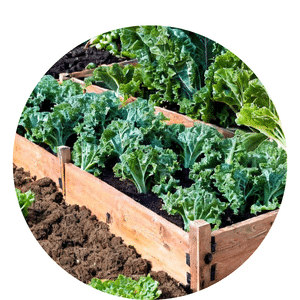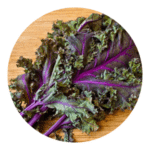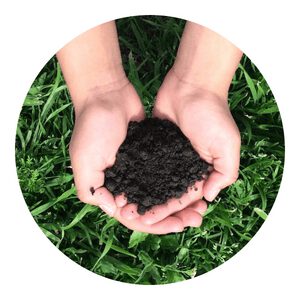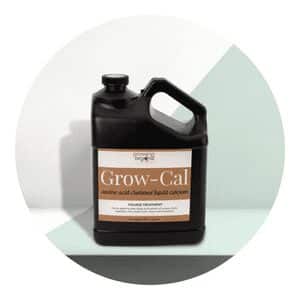How to grow organic Kale in Arizona
Organic kale is a nutritious and delicious leafy green that can be grown in Arizona.
If you’re interested in growing your own organic kale, this article will provide you with the steps to do so.
You’ll learn how to choose the right varieties of kale for Arizona’s climate, when and where to plant it, and how to care for it throughout the season.
With the right preparation and guidance, anyone can successfully grow organic kale in Arizona.

Arizona Kale Menu
The unique challenges of gardening in the Arizona climate
Gardening in Arizona can be a challenge, but it doesn’t have to be.
With the right knowledge and preparation, you can successfully grow organic kale in your home garden.
The extreme heat and lack of rainfall during much of the year make gardening difficult for many Arizonans.
Fortunately, there are strategies that any gardener can implement to create an oasis in their own backyard and grow delicious organic kale all season long.
From choosing the right variety of kale to understanding soil drainage needs, knowing how to care for your plants is pivotal when gardening in Arizona’s climate.
Understanding sun exposure requirements and learning seasonal planting schedules are just as important as properly using mulch or irrigation techniques such as drip systems.
Utilizing these tips will help ensure a healthy crop despite the hot desert climate.
Organic Fertilizer
Organic Fertilizer is the key to growing organic kale in Arizona. With an ideal climate and plenty of sunshine, the Grand Canyon State is perfect for cultivating healthy plants like kale.
Organic fertilizers are an important part of achieving a bountiful harvest of this nutritious vegetable.
The natural fertilizer provides essential nutrients, helps promote root growth, and increases microbial activity in the soil while also reducing water runoff pollution and avoiding over-application of synthetic chemicals.
Organic fertilizers come from naturally occurring materials such as compost or animal waste products.
These natural sources provide essential nutrients that help your kale grow strong and healthy without using any harsh synthetic chemicals.
Kale loves nitrogen-rich soil so adding organic matter such as compost or manure can be very beneficial for its growth.
What organic fertilizer is and why it is beneficial for growing kale
Organic fertilizer is an essential part of growing kale in Arizona. It provides the vital nutrients needed for optimal plant growth and health.
Organic fertilizer contains natural, renewable ingredients that are beneficial to soil health.
It helps increase nutrient availability, improve water retention and drainage, promote soil aeration, and provide a good balance of macro-nutrients for healthy vegetable production.
Organic fertilizer can be made from animal or plant materials such as manure, composted organics, seaweed extract, fish emulsion and rock dusts.
These products provide the necessary nitrogen, phosphorus and potassium needed to grow kale in Arizona’s hot climate.
They also supply other trace elements like calcium, magnesium and sulfur which are important for healthy plants.
By using organic fertilizers you are helping to create a balanced ecosystem where your kale will thrive!
Organic fertilizers that are suitable for use in Arizona
Organic gardening is becoming increasingly popular in Arizona, and kale is an excellent choice for a vegetable to grow in the state.
However, it’s important to use organic fertilizers that are suitable for the region.
Compost is one of the best fertilizers for kale to be grown in Arizona because it helps retain moisture and improves soil structure. It also adds essential nutrients, such as nitrogen and potassium, which help promote healthy plant growth.
Another great option is fish emulsion fertilizer, which contains both macro- and micronutrients to help plants absorb necessary minerals from the soil.
Additionally, manure can provide essential nutrients while reinforcing beneficial microbes in the soil.
Kale, leafy and green, in Arizona it should be seen. Organic is the way, for health, this will pay. Clear away the weeds, no need for many seeds. Through sunny days you must care, in lighter soils grow if you dare. Arizona heat makes quite a show, yet still keep kale's deep green glow. Mix compost with water galore and give your kale planting more. Feed kale to the soil twice a week, then reap a harvest so unique!
Chappy The Gardener
Organic Gardening Methods
Organic gardening is becoming more popular as people become increasingly aware of the benefits it has for both their health and the environment.
Growing organic kale in Arizona can be done with some simple methods that are easy to follow.
Organic gardening does not use synthetic chemicals or genetically modified organisms, which can help keep the soil healthy, conserve resources, and promote biodiversity in the area.
Kale is a great vegetable to grow organically in Arizona because it thrives in cooler temperatures, tolerates drought conditions, and grows best when planted during autumn and winter months.
The type of kale that grows best in Arizona includes curly-leafed varieties like Red Russian Kale, Lacinato Kale, or Scotch Curled Kale.
To get started with organic gardening for kale in Arizona one should consider soil preparation techniques such as tilling compost into the soil prior to planting seeds or seedlings.
The principles of organic gardening
Organic gardening is becoming increasingly popular as people are turning to natural methods for growing their own food.
The principles of organic gardening are important for growing kale in Arizona because they provide the best environment for optimal growth and nutrition.
Organic farming focuses on cultivating healthy soil filled with beneficial bacteria, fungi, worms, and other microorganisms that promote better plant health.
Providing your kale plants with nutrient rich soil will encourage strong root systems that can withstand droughts common in dry climates like Arizona’s.
Additionally, avoiding synthetic fertilizers or pesticides will improve the flavor and nutritional value of your homegrown produce by eliminating chemicals from entering into the fruits and vegetables you eat.
The principles of organic gardening also emphasize sustainability by promoting biodiversity through crop rotation and companion planting.
These practices help reduce pest infestations naturally while providing essential nutrients to maintain a healthy garden ecosystem.
Tips and techniques for using organic gardening methods
Organic gardening methods are becoming increasingly popular in Arizona, and learning how to grow organic kale is a great place to start.
There are several tips and techniques that can make growing organic kale easier, such as companion planting and crop rotation.
Companion planting is a valuable tool for growers because it can help control pests while improving soil fertility and air quality.
Crop rotation helps prevent the depletion of nutrients in the soil so plants can remain healthy year after year.
Learning these tips and techniques for using organic gardening methods like companion planting and crop rotation will help ensure success when trying to grow organic kale in Arizona.
Hydroponic and Aquaponic Growing
Hydroponic and Aquaponic Growing is an exciting way to grow organic kale in Arizona.
This method of gardening requires no soil, which makes it ideal for dry climates like Arizona.
As an added benefit, hydroponics and aquaponics use up to 90% less water than traditional soil-based farming.
Hydroponics can be done in many different ways but generally involves using a nutrient-rich solution instead of soil to deliver essential minerals directly to the root zone of plants.
What hydroponic and aquaponic growing are
Hydroponic and aquaponic growing are two alternative methods of growing organic kale in Arizona.
Hydroponics is a soil-less method of cultivating plants using mineral nutrient solutions instead of soil.
Aquaponics combines hydroponics with fish farming, creating an ecosystem where the water circulated between the two systems is broken down by beneficial bacteria, allowing nutrients to be absorbed directly by plants.
These two methods can both be used to grow healthy, organic kale in Arizona.
Using either hydroponic or aquaponic systems allows for more control over all aspects of the growing environment such as temperature and light, meaning it’s possible to grow a variety of crops year-round even in arid climates like Arizona.
The key to successful yields when using these methods is understanding how various factors affect growth including light levels, pH balance, temperature and nutrient levels within the system.
The benefits of hydroponic and aquaponic growing
Hydroponics and aquaponics are two growing systems that have been gaining attention in recent years.
Those interested in organic gardening may find these methods advantageous, especially if they live in a desert climate like Arizona.
Hydroponic and aquaponic growing provide many benefits compared to traditional soil-based gardening, such as water conservation and the ability to better control environmental factors like temperature, lighting and humidity.
The main benefit of hydroponic solutions is their capacity for conserving water.
Hydroponics use a water-based solution instead of soil to grow plants, meaning less total water needs to be used than with traditional soil-based methods.
Additionally, because the pH levels can be more precisely monitored using hydroponic solutions, it reduces the need for fertilizer applications which can contaminate run-off when not properly managed.
Raised Beds
Raised Beds are an ideal option for growing organic kale in Arizona.
Not only do these beds provide the necessary soil drainage for this type of crop, but they also provide a higher level of soil fertility than traditional garden beds.
Using raised beds is the perfect way to protect your plants from excessive heat and provide them with the right environment to thrive in Arizona’s warm climate.
The key to success when growing organic kale in raised beds is ensuring that you select a location that receives plenty of sun exposure throughout each day.
To maximize the benefits, use premium quality organic soil enriched with compost and fertilizers tailored specifically for kale.
Be sure to water your plants regularly, as they require more water than other vegetables due to their high moisture content.
With proper care and maintenance, you can enjoy fresh organic kale all year long!
Tips for building and maintaining raised beds
Raised beds are an ideal way to grow organic kale in Arizona.
Creating and caring for raised beds requires some extra effort, but the rewards can be worth it.
It is essential to understand the process of building and maintaining these beds, including the proper soil mix and use of mulch.
First, select a site that has plenty of sunlight exposure throughout the day.
The soil should be well-draining with a neutral pH level.
When constructing the bed, it is important to use quality materials such as treated lumber or stone.
Fill the bed with a combination of organic matter such as compost, well-rotted manure, and peat moss to ensure proper drainage while providing adequate nutrients to your plants.
Adding mulch will help conserve moisture by blocking out weeds and reducing evaporation from sunlight exposure.
In conclusion, growing organic kale in Arizona is possible for everyone, from experienced gardeners to those just starting out.
Not only does it taste great, but it’s also so nutrient-dense that you don’t need a large quantity of the vegetable to get all the benefits.
Additionally, there are numerous varieties of kale available to choose from that can be planted at different times throughout the year.
Click To Grow
Helps Us Grow – Share If You Like

















